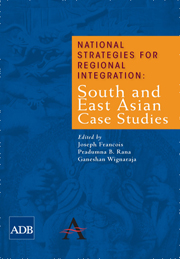6 - Sri Lanka
from South Asian Perspectives
Published online by Cambridge University Press: 05 March 2012
Summary
Introduction
As in many other contemporary developing countries, Sri Lanka's economic policy regime in the 1960s and 1970s saw a gradual shift toward inward-looking dirigiste policies, prompted by deteriorating international terms of trade for its primary export commodities (tea, rubber, and coconuts). However, the country witnessed a marked shift in economic policy thinking from the late 1970s, when it adopted an outward-oriented liberal market economic policy regime, becoming the first country in South Asia region to do so. The policy program included many of the standards reforms of a structural adjustment program, including liberalization of trade and payments, rationalization of public expenditure, dismantling of controls on prices and interest rates, promotion of private sector development, promotion of foreign investment, and financial sector reforms.
The structural transformation of the Sri Lankan economy following the reforms—moving it away from a predominantly agricultural economy to one driven by industrial and services sector growth—set the pattern for its trade and investment links with the rest of the world. The emergence of an export-oriented garment industry strengthened Sri Lanka's trade and investment links with East Asia—as a major source of imports and foreign direct investment (FDI)—while its export interests were primarily focused on the developed countries in Europe and North America. Apart from the early emergence of the garments industry, industrial transformation has remained limited in the two decades of reform because Sri Lanka's investment climate has been hurt by unfavorable political and policy developments.
- Type
- Chapter
- Information
- National Strategies for Regional IntegrationSouth and East Asian Case Studies, pp. 277 - 332Publisher: Anthem PressPrint publication year: 2009



